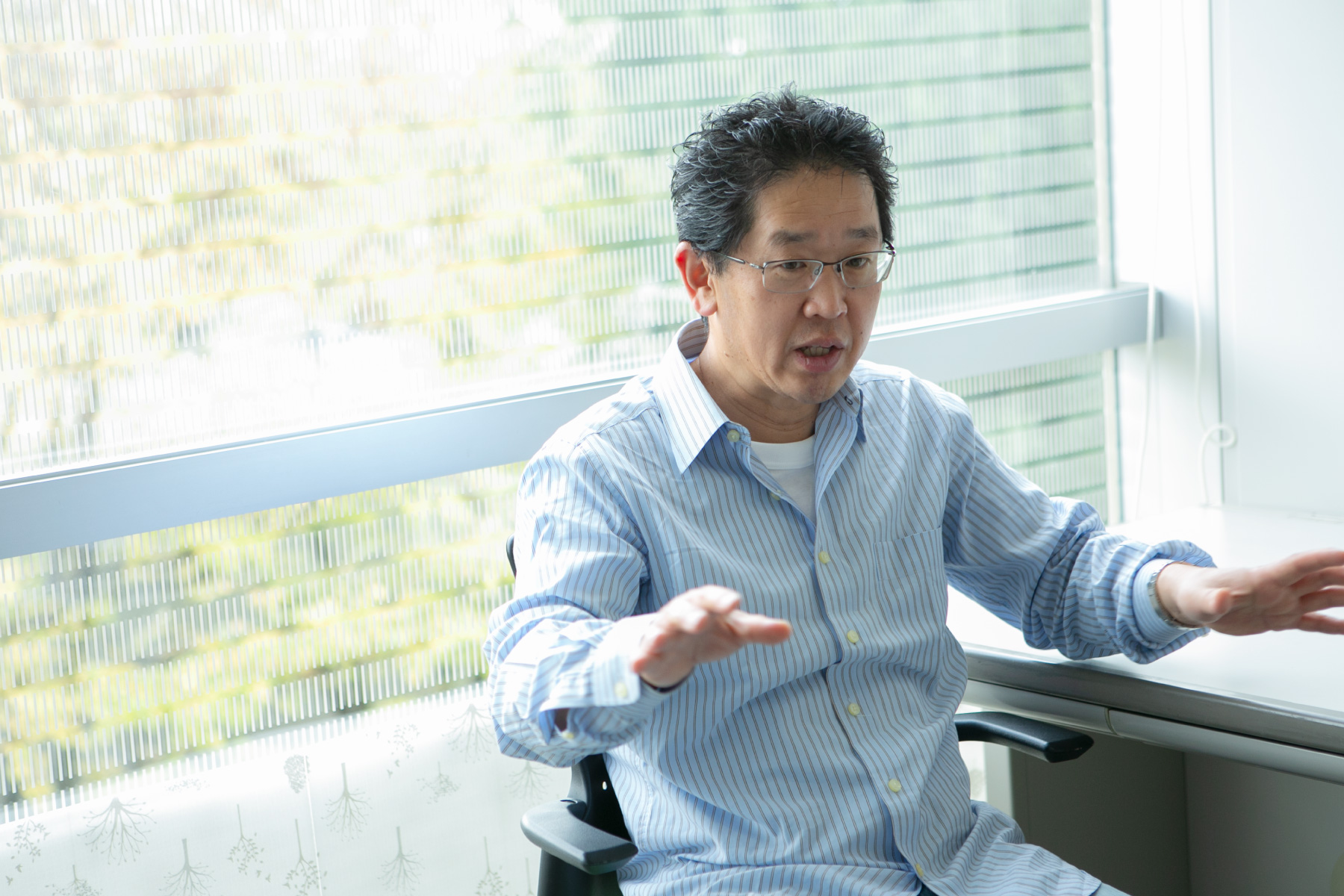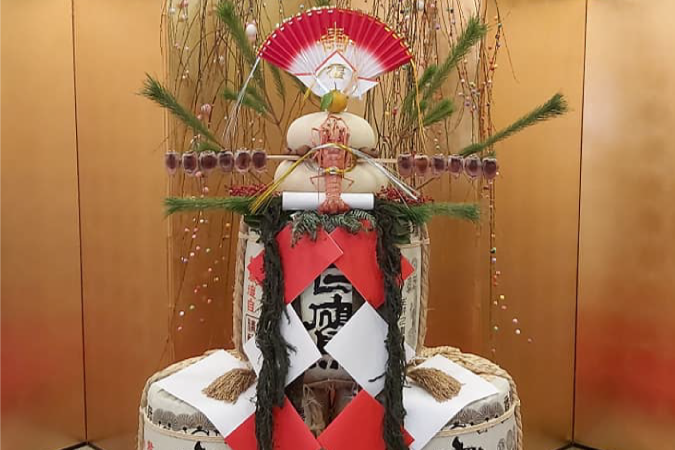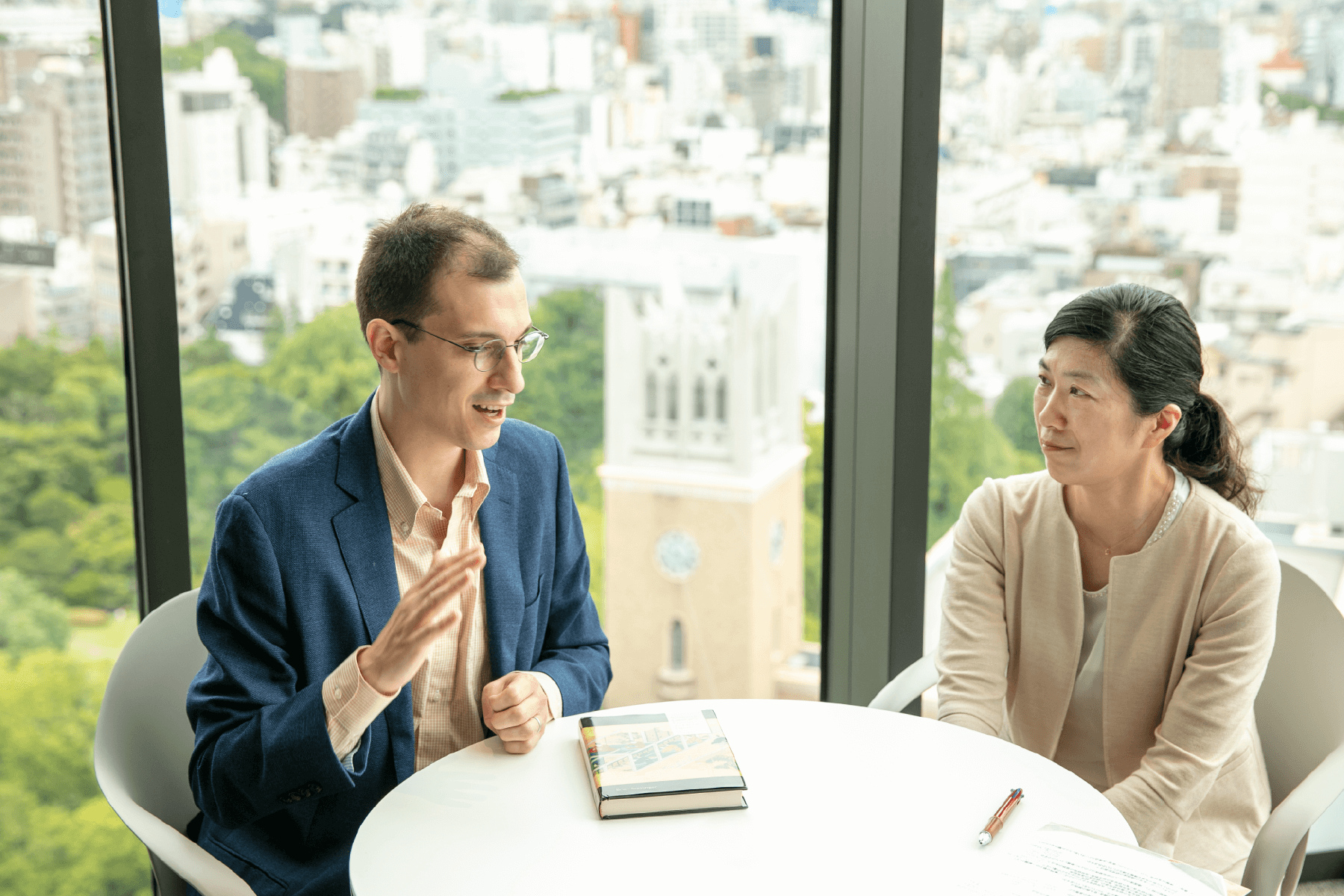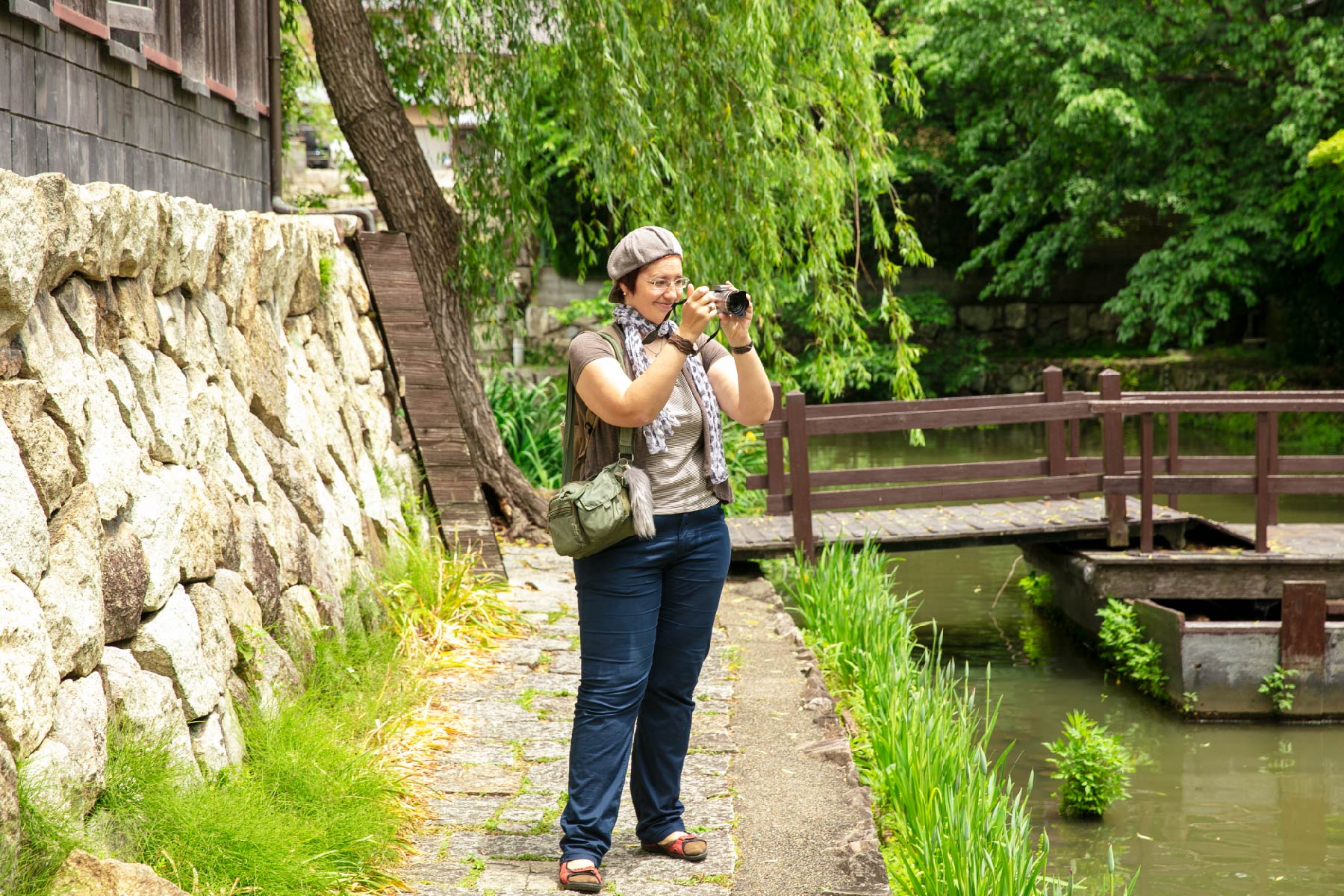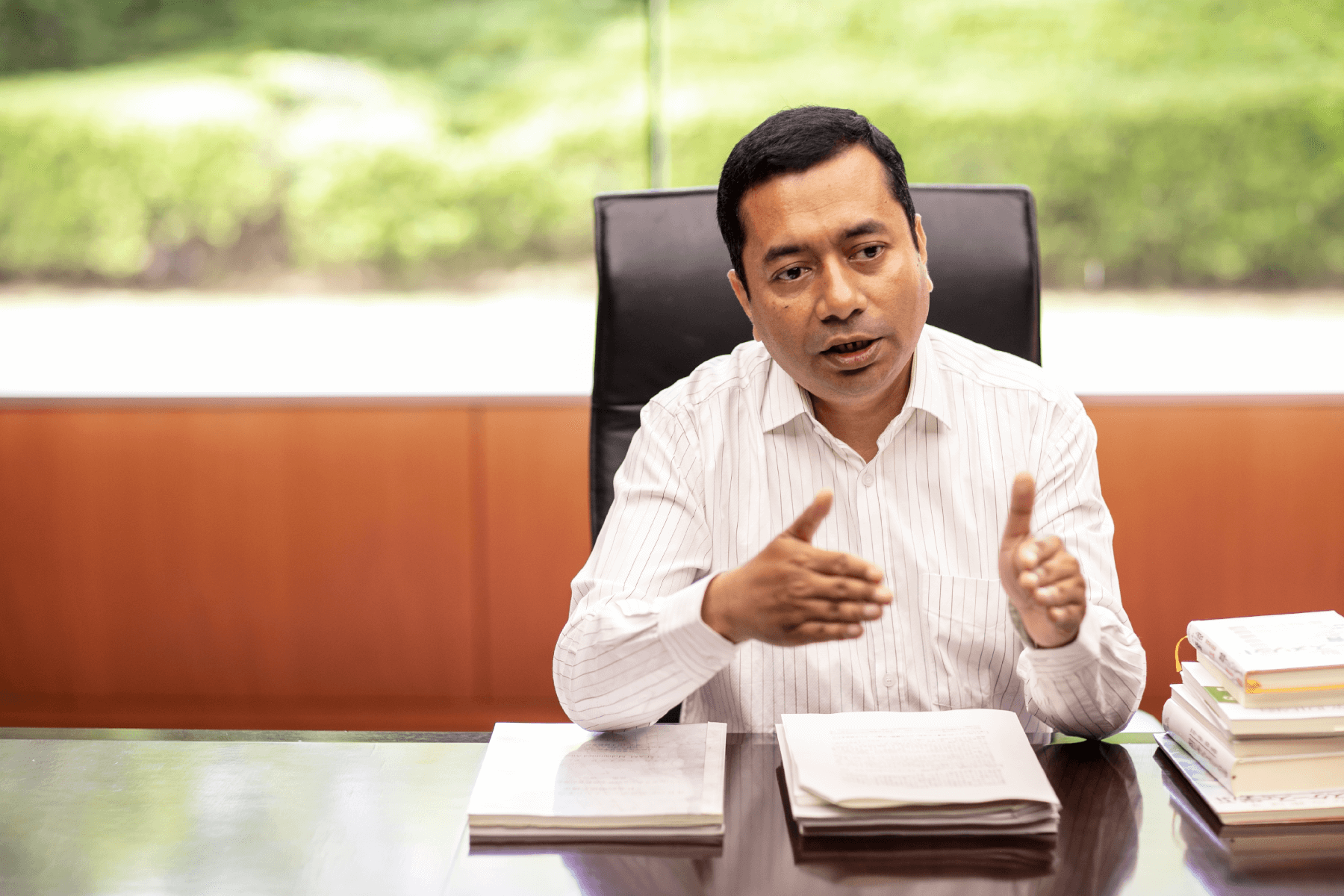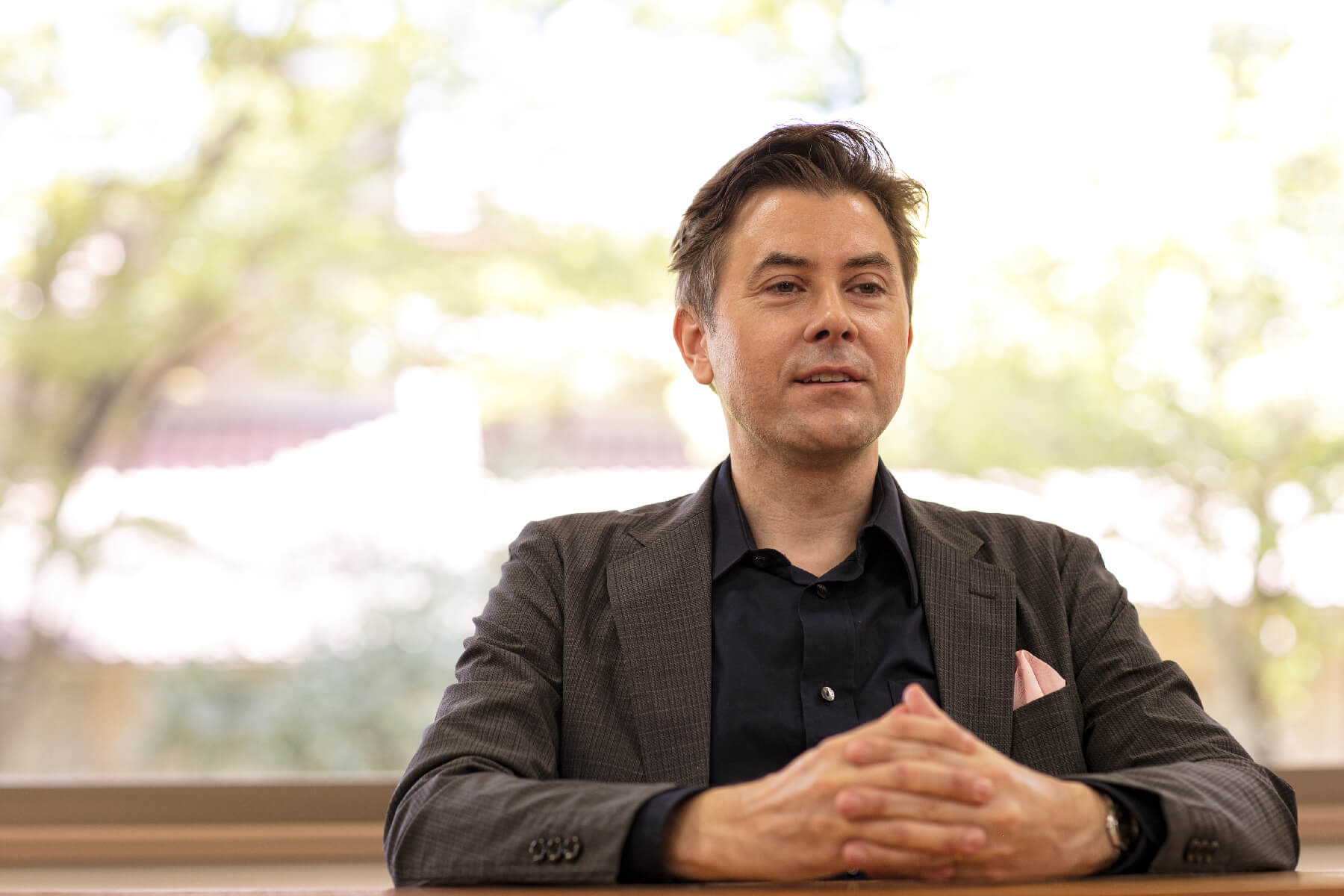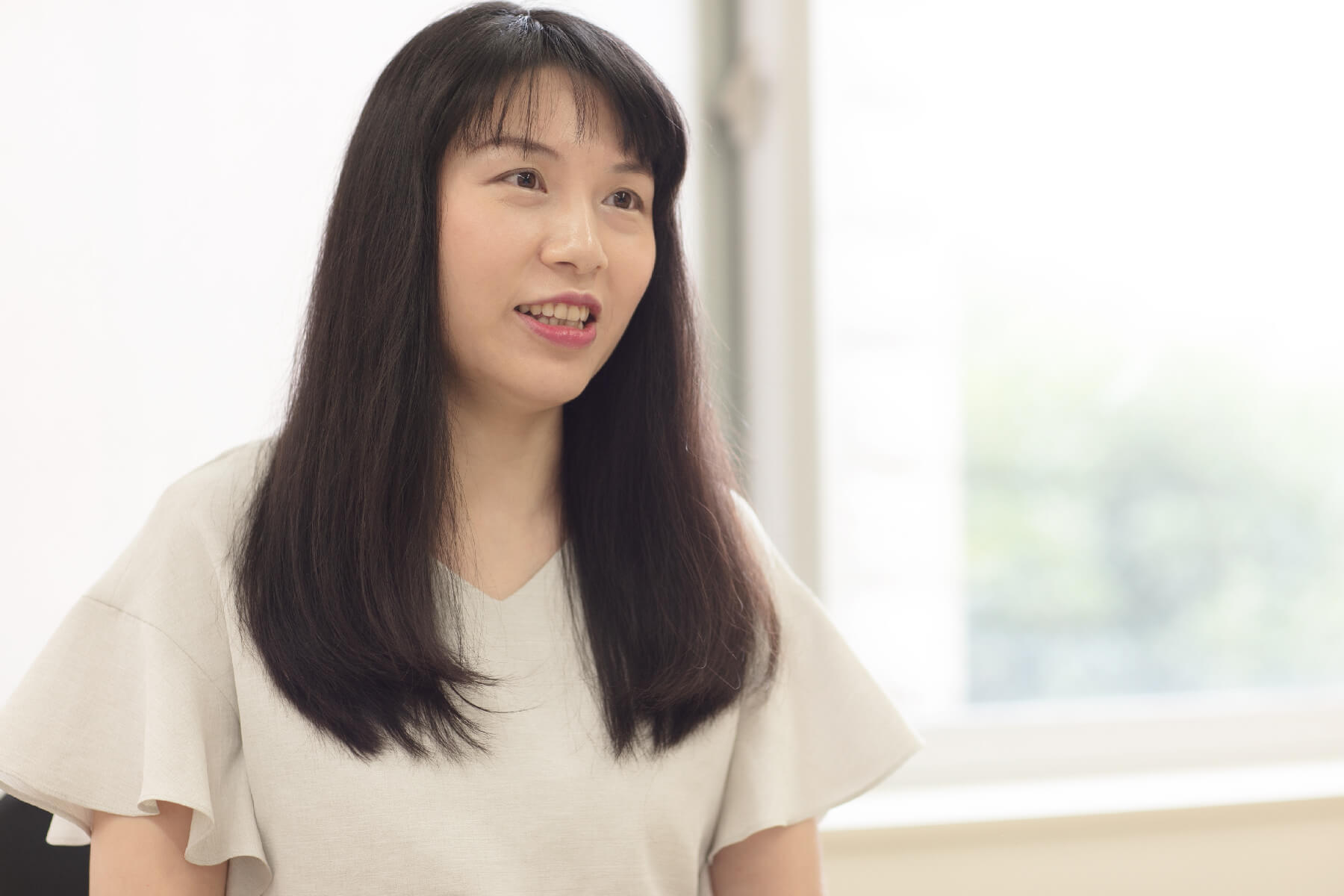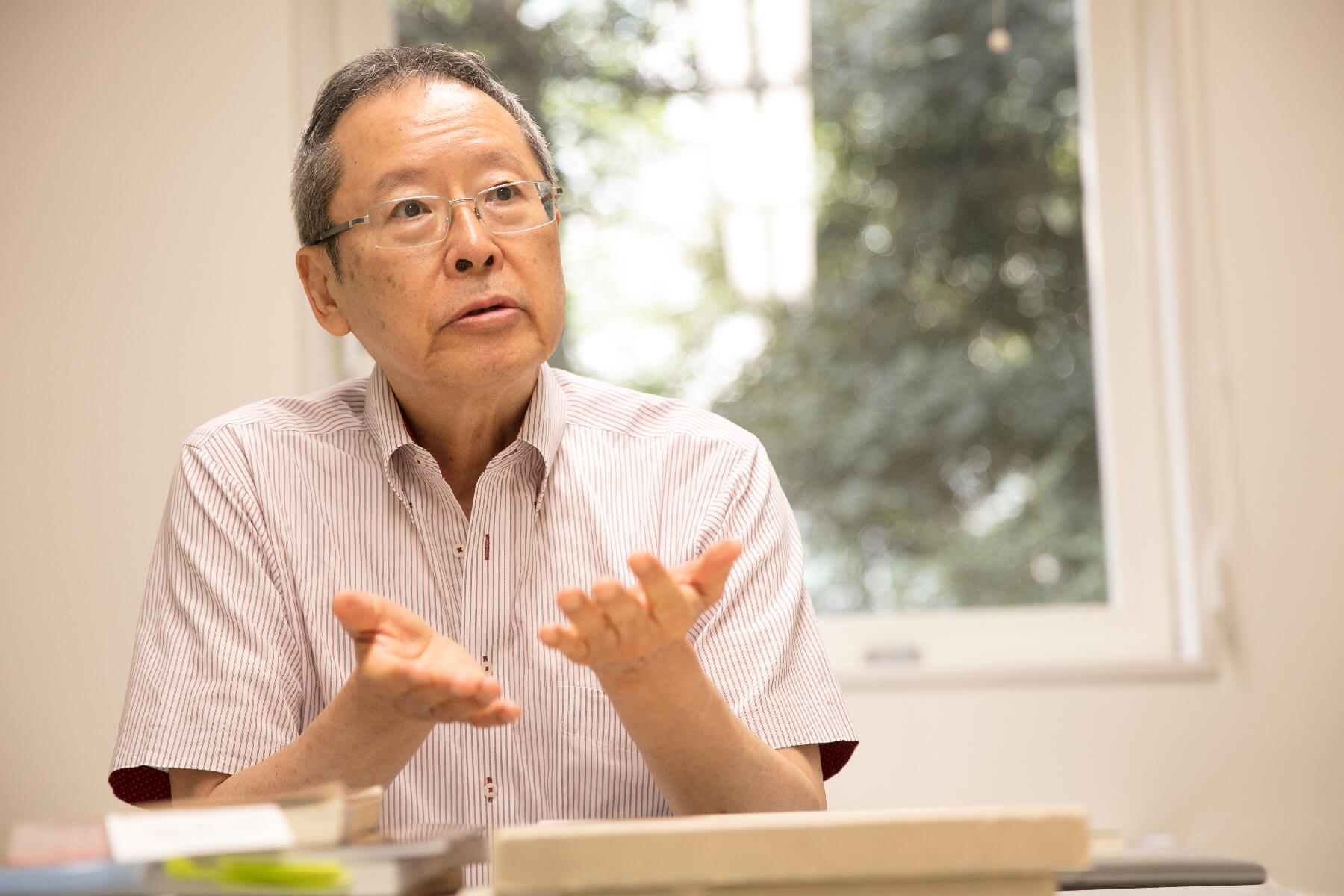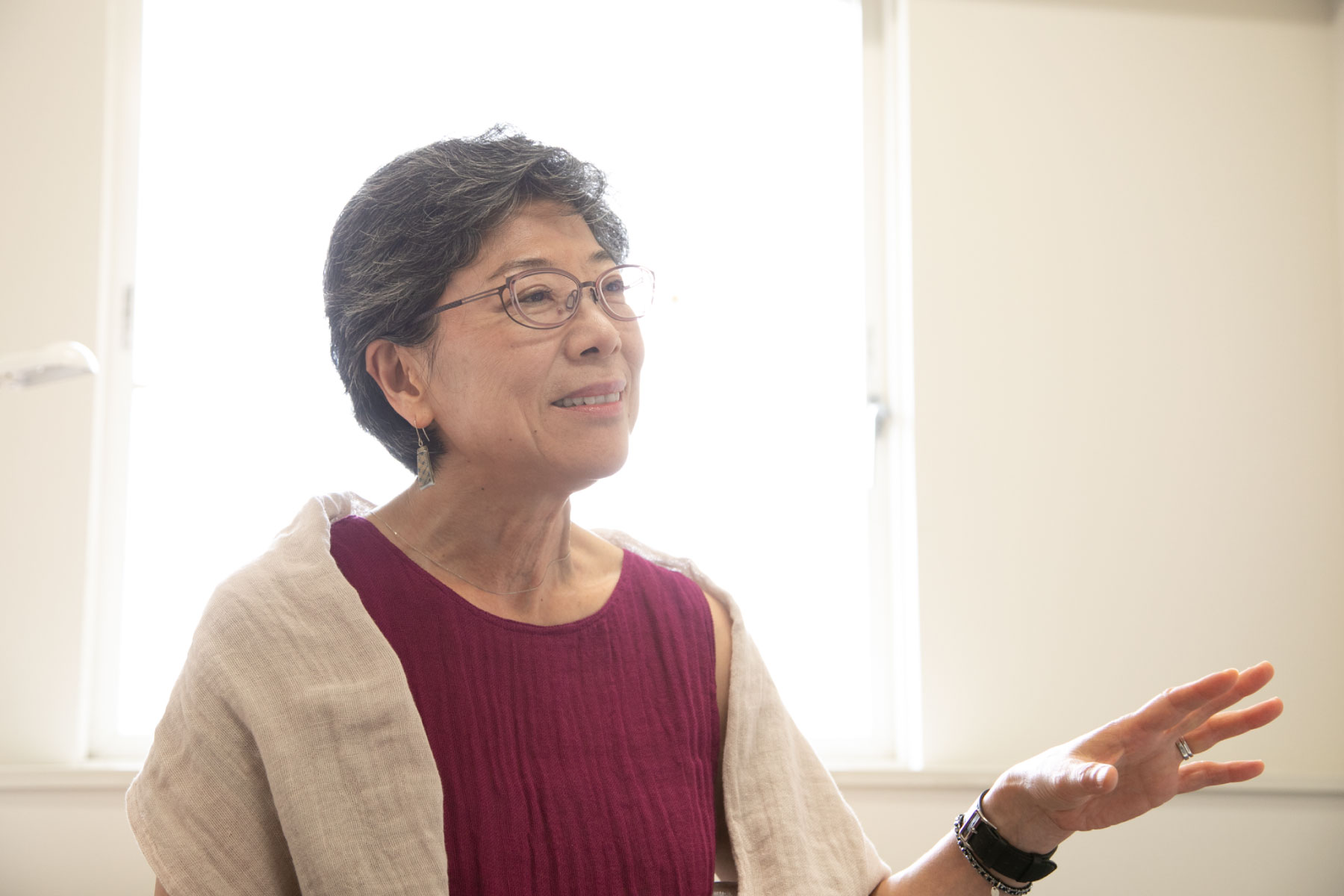I want to develop an in-depth understanding of the Japanese people, and to communicate the reality of Japanese society
First of all, could you tell us how you became interested in Japanese language and culture?
I started studying Japanese in 1988, while I was a second-year student at the University of Queensland in Australia. I was majoring in business at the time. In the 1980s, the Japanese economy was right in the middle of its “Japan as Number One” period, and Japanese investment in Australia was growing substantially. I felt that if I wanted to study business, I had to study Japanese too.
However, part-way through I began to lose interest in studying business. I found Japanese more interesting and my grades were good, so after graduating in 1990, I took a one-year working holiday, during which I stayed in Tokyo’s Itabashi Ward. After that, I returned to Australia and got a job in a bank, but sure enough it didn’t really suit me (laughs).
I decided that I wanted to study Japan some more, and right as I quit the bank, there was a scholarship available for study abroad in Japan. Using the scholarship, I spent four years from 1992 studying at International Christian University (ICU) in Tokyo. After that, I attended the University of California, where I took a master’s degree in Asian studies and a doctorate in history.
It took me a while to get where I am now, but I’ve never regretted it. I think the fact that I left my initial career and chose a different one suggests that this was the best path for me.
Having taken an interest in Japan, what made you choose contemporary Japanese history in particular?
My supervisor at ICU was a researcher on social movements in Japan, especially Meiji-era social movements, and he inspired me to take an interest in social activism. As I was studying this topic, I began to think about studying the post-war, rather than pre-war period. As such, I became interested in post-war social and civic activism, as well as the trade union and labor movements.
Why the social movements? Well, personally I’m not someone who takes part in these sorts of things, so I had a simple question: why do people who are passionate about social movements take part in them?
Moreover, I didn’t like the stereotypes of Japanese people that are held abroad. For instance, it’s often held that for Japanese people, the most important thing is the group that they belong to, that they have no opinions of their own, and they won’t go against the group, but that really isn’t the case. I thought that aspect was interesting, too. In other words, I wanted to understand Japanese people on a deeper level. I wanted to understand the diversity that lies beneath the common stereotypes of Japan, the various realities of Japanese society, and to communicate these to the general public as an academic.

Two perspectives: “Japan and Asia” and “Asia in Japan”
What is the focus of your study during your stay here?
For the last four years, I have served as Associate Dean of the Australian National University’s College of Asia and the Pacific. As such, I was able to take a six-month sabbatical, and that lined up perfectly with the application for this fellowship.
This research is closely related to my original interests, and I am focusing particularly on the relationship between Japan and the rest of Asia in the post-war era. Within this, I am interested in two perspectives: both “Japan and Asia” and “Asia in Japan.”
First of all, in terms of “Japan and Asia,” I would like to study from a historical perspective how Japan built new relationships with its neighboring countries following the end of World War II. It is not about business, politicians, or bureaucrats, but rather about how ordinary citizens, activists, and progressive intellectuals formed relationships with Asian countries after the war. As a matter of fact, there are few such studies in the English-language literature. There are many histories on states and politicians, or histories of international relations, but the activities of ordinary people are little known, so I wanted to research and write a book about those through the post-war period. Since there is no research by previous scholars, it is a huge challenge to find the material and create that story from scratch by myself.
Secondly, “Asia in Japan” refers to how connections with Asia were built within Japan, and relates to the diversity within the country. As I mentioned earlier, there are many kinds of people among the Japanese, and although there is this idea that Japan is a homogeneous nation, that isn’t really true. I’ve always wanted to do research on that point. For example, the relationship with Koreans resident in Japan is similar. There are still various feelings on both sides, and I think it’s still a difficult issue.
It’s true that there are all kinds of conflicts, I feel that the information has not been set out properly, even in Japan.
In fact, the study of “Japan and Asia” is deeply connected to the identity of the Japanese people. If we look at the modern history of Japan, there is an ongoing conflict as to whether or not the Japanese are Asian, as symbolized by Yukichi Fukuzawa’s phrase “leaving Asia and entering Europe.”
The topic of what Japanese people are, of who is Japanese and who is not, is also a very interesting one. If a Japan-resident Korean is born in Japan, lives their life using Japanese, and cannot speak Korean, is that person Japanese or not? Every country has its own issues with identity, including Australia, but I believe that researching the relationship between Japan and Asia will give us a deeper view of the identity of Japanese people.
In recent media reports, all we see is that relations between Japan and China, and between Japan and South Korea, are poor. However, I want people to know that there is a reality beyond that image.
Last year I visited Fukuoka, and I was surprised by what I found. There are many Koreans there, and you hear Korean spoken in all kinds of places. Fukuoka is also very active in building relationships with Korea at the city level. Unlike what you see in the media reports, there are a lot of people who are trying to keep interacting at that kind of grassroots level.
In addition, during the 1980s, Japan supported Korea’s democracy movement in a number of ways, but that sort of thing is not well known in Korea, or even in Japan. It is important to acknowledge that this kind of positive historical relationship exists too.
Another thing is that research on modern Japanese history has generally focused on the relationship with the United States and the strong influence that it has had, but I want to demonstrate that as well as the United States, other Asian countries have also had an influence on Japan’s modernization.

Tracing information piece by piece, finding materials only available in Japan
Could you tell us what your fieldwork in Japan was like, and what parts were particularly significant?
First of all, there’s nothing that makes me happier than being able to just research and collect materials for six months, with no need to do anything else.
What I do on a day-to-day basis is fairly prosaic — I use the internet and the library to obtain materials that I think I need. Then, when I read one document, I find the name of a person, an incident, or the name of another book or magazine, and I go back again to look for it. Since I have a general idea of the kind of book I want to write for this residency research, I’m trying to find as much material related to it as possible to make sure that my ideas are really correct.
What’s more, about 60-70% of the material I find is unusable. You go to great pains to find something, then look through it and realize it’s not going to be any help. Searching for materials is a slow and steady process, like looking for one single tree in the forest.
Even so, sometimes you find something by chance and think, “this is great!” For example, there was a book published by Kanagawa Prefecture in 1995 called “Twenty Years of Civic Diplomacy,” which was held in the Fujisawa Public Library. “Civil Diplomacy” was thought up by Kazuji Nagasu, who was governor of Kanagawa Prefecture between 1975 and 1995. He was originally an economist, but he believed that relations with Asia needed to be improved at the civic, rather than national level. After becoming governor, he coined the term “Civic Diplomacy” and made policy to put it into practice. From the end of the 80s through to the 90s, the number of migrant workers from Asian countries such as Iran and the Philippines began to rise, and Civic Diplomacy also led to policies for supporting foreign workers.
Although I knew that Nagasu had done research on Asia before becoming governor, I didn’t know that this kind of policy existed before coming to Japan this time. I think I was probably reading some material on Nagasu, and the words “Civic Diplomacy” popped out, and by looking into it, I finally found this book. I think it will be a very important part of my research.
So you followed the pieces of information one by one, and then arrived at the materials you needed.
I also got my hands on a first edition of Yoshiyuki Tsurumi’s “Bananas and the Japanese.”
Yoshiyuki Tsurumi is the cousin of the philosopher and Harvard graduate Shunsuke Tsurumi. He felt a strong desire to do something different from Shunsuke, who was an expert on America, and so he studied Asia as an ordinary researcher. Then he wrote a book called “Bananas and the Japanese,” which discussed the problems happening in Asia during the 1970s and 1980s.
This was published in 1982, and it is quite heavy going. In the 1970s and 1980s, Japanese investment in Asia increased rapidly, and at that time, about 80% of the bananas consumed in Japan came from the Philippines. The book explains, in easy-to-understand way for the general public, the pollution and labor problems on the Philippine plantations and why bananas are so cheap in Japan.
The book sold well, and afterwards many civic groups appeared for learning about the problems arising from the fact that much of what Japanese people consume day-to-day comes from Asia. In that sense, Yoshiyuki Tsurumi plays an important role in Japan’s relationship with Asia. He is an important part of my research on “Asia in Japan” and one day I hope to collect and read everything that he wrote.
In addition, a quarterly magazine called “Sanzenri Quarterly,” published by Koreans resident in Japan, is also a valuable resource that would not have been available to me had I not come here. An issue published in 1985 included a conversation between Japan-resident Koreans and progressive Japanese intellectuals on “Japan’s Postwar Responsibility and Asia.” There was a very deep rift between the two sides for a long time after the war, but I think this is one piece of evidence showing that in the 1980s, people were finally able to sit down at the same table to talk about the war.
I happened to find this magazine at a second-hand bookstore. You can often find excellent materials in the secondhand bookstore districts, such as Jimbocho in Tokyo. It’s just like a treasure hunt, but you don’t know in advance what kind of treasure there will be. The real pleasure of research is that you don’t know that something is a really great treasure until you find it and read it.

Running along the coastline, enjoying the beautiful sight of Mt. Fuji. After returning home, a focus on writing the book.
How was your life during your stay? Did you have any time for hobbies?
In Japan, I lived in Fujisawa City, Kanagawa Prefecture, where my wife’s family home is. I often visited nearby Kamakura with my family. In the middle of January, I also took a walk through Tsuruoka Hachimangu Shrine — I really love Kamakura.
I also run marathons, so every day I would run 15km or so. The Shonan area is perfect for running. If I run 4km along the river from my house to Enoshima Island, then 4-5km along the coastline, I can get a clear view of Mt. Fuji. Getting up in the morning to run and see that beautiful sight was one of the happiest parts of my stay in Japan.
Other than that though, I don’t really have any hobbies. My hobby is research. I suppose I’m quite a boring person, but while I’m in Japan, I just want to do research, and spending time on hobbies just feels like a waste. My wife often gets angry at me for that (laughs), but I think all academics are probably similar.
So, could you tell us about your plans and future prospects after returning home?
My main goal is to write a book. When I get back to Australia, I’m going to slowly look over the material one more time, create an overall picture of the history in my mind, then gradually work on writing it.
I’m also very interested in the topic of “Asia and Japan,” so if possible, I would like to form a group of scholars to meet and produce a collection of papers together. There are also several other academic papers that I’d like to write.
When I return, I will start teaching classes at the university where I work, but this semester I have a class on modern Japanese history, so I want to actively communicate the results of this research in my lectures as well.
(Interview conducted in February 2020)





